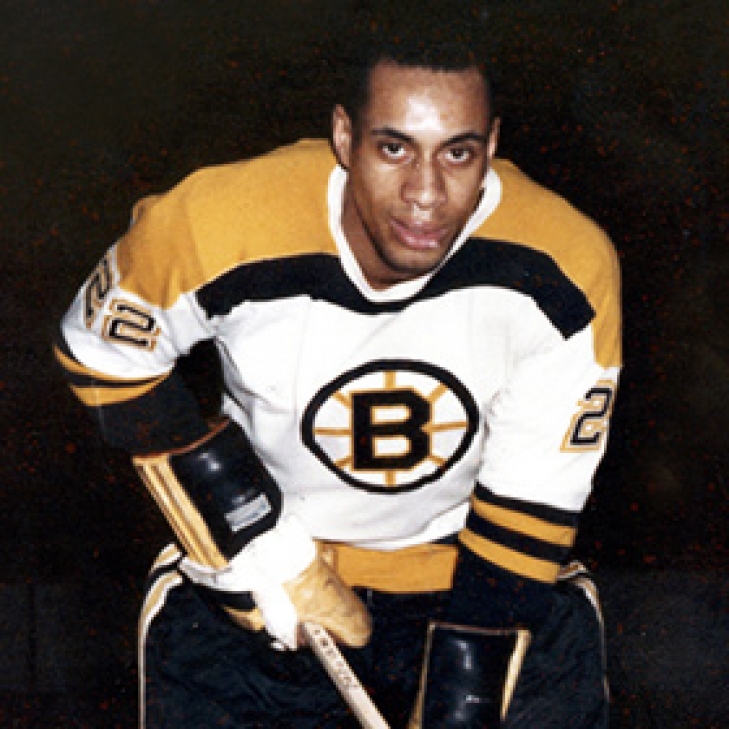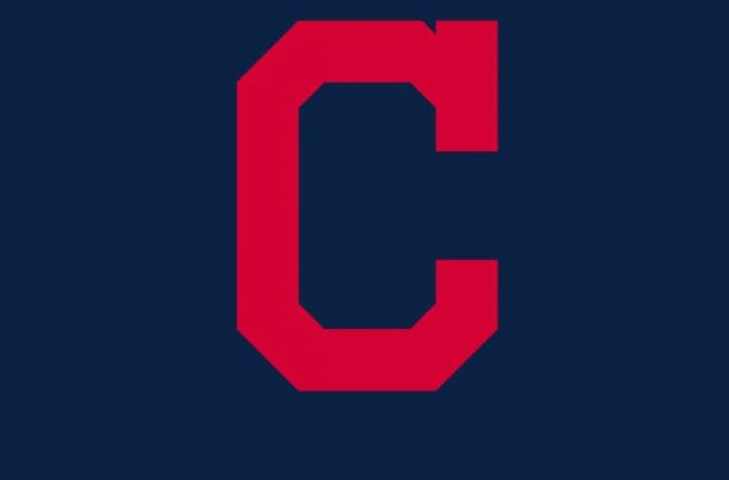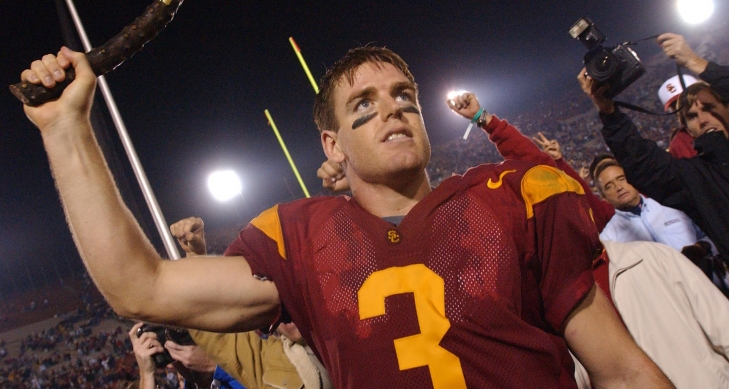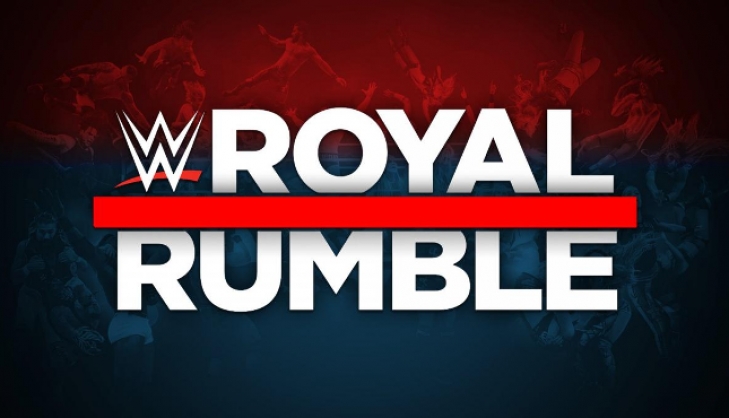
Committee Chairman
The Boston Bruins to retire Willie O'Ree's number next month.
The Boston Bruins announced today that they will be inducting the number 22 of Willie O’Ree, who made history over six decades ago as the first black player in the NHL. O’Ree, 85, was inducted into the Hockey Hall of Fame in the Builder’s Category in 2018.
The event will take place on February 18, during their home game against the New Jersey Devils.
O’Ree made history when he was called up for two Games in 1958 for the Bruins, and he came back for 43 Games in the 1960-61 campaign. He scored 15 Points over his NHL career, but played pro hockey for 21 years.
We here at Notinhalloffame.com would like to congratulate Willie O’Ree for earning this honor.
Our All-Time Top 50 Cleveland Indians are now up
Yes, we know that this is taking a while!
As many of you know, we here at Notinhalloffame.com are slowly generating the 50 of each major North American sports team. We have a new one to unveil today, that of the Cleveland Indians.
The origin of the Cleveland Indians begins in Grand Rapids, Michigan, in 1894, where they played in the Western League. The franchise relocated in 1900, becoming the Cleveland Lake Shores, and eventually were an inaugural team of the American League, going through multiple name changes (Bluebirds, Broncos, Naps) before becoming the Indians for over a decade.
Cleveland would become a great sports town, but the baseball team has not given them very much to cheer for over the years. The Indians have only won the World Series twice (1920 and 1948), with three other appearances.
The team has announced that they will soon drop the Indians nickname, though as of this writing, it is not sure what they will change it to and when precisely it will take place.
Our Top 50 lists in baseball look at the following:
1. Advanced Statistics.
2. Traditional statistics and how they finished in the American League.
3. Playoff accomplishments.
4. Their overall impact on the team and other intangibles not reflected in a stat sheet.
Remember, this is ONLY based on what a player does on that particular team and not what he accomplished elsewhere and also note that we have placed an increased importance on the first two categories.
This list is updated up until the end of the 2019 Season.
The complete list can be found here, but as always, we announce our top five in this article. They are:
1. Bob Feller
2. Nap Lajoie
3. Tris Speaker
4. Lou Boudreau
We will continue our adjustments on our existing lists and will continue developing our new lists.
Look for our more material coming soon!
As always, we thank you for your support.
The College Football Hall of Fame announces their 2021 Class
The College Football Hall of Fame announced their Class of 2021, which include 11 former players and two coaches.
The Class of 2021 is:
Harris Barton -- Offensive Tackle, North Carolina, 1983-86: Barton was an immediate starter at UNC, playing mostly at Left Tackle. The All-American was named the ACC Outstanding Offensive Lineman as a senior and he was also an academic All-American. Barton would later win three Super Bowl Rings with the San Francisco 49ers.
David Fulcher – Defensive Back, Arizona State, 1983-85: Fulcher was a two-time All-American who recorded 12 Interceptions. He earned the nickname of “Fo-Rock” for his punishing hits, as he hit like a rock, and the “Fo” was in reference to the start of his last name.
Rudy Hubbard – Head Coach, Florida A&M, 1974-85: A former Running Back at Ohio State (1865-67), Hubbard was an Assistant Coach for the Buckeyes before taking over the reins of the Rattlers in 1974. Hubbard had a career record of 83-48-3 and won two Black College National Championships and a Division I-AA Title.
Dan Morgan – Linebacker, Miami (FL), 1997-2000: Originally a Fullback, Morgan became one of the best Linebackers in the country. In 2000, Morgan made college football history becoming the first player to win the Butkus Award, Nagurski Trophy and Bednarik Award. Morgan also won the Big East Defensive Player of the Year. At the time of his graduation, Morgan was the all-time school leader in Tackles (532). He would later play seven years with the Carolina Panthers.
Carson Palmer – Quarterback, USC, 1998-2002: One of the best Quarterbacks in Trojans history, Palmer won the Heisman Trophy in 2002, and also was the winner of the Johnny Unitas Golden Arm Award. Statistically, Palmer threw for 11,818 Yards and 72 Touchdowns. Palmer would play in the NFL for 15 years after being taken number one by the Cincinnati Bengals, and he went to three Pro Bowls.
Tony Romo – Quarterback, Eastern Illinois, 2000-02: Romo took Eastern Illinois to two OVC Championships and was a three-time OVC Player of the Year. Winning the Walter Payton Award as the top player in the Division I Subdivision, Romo threw for 7,816 Yards and 82 Touchdowns in college. He moved on to the pros, playing for the Dallas Cowboys for 14 years and earning four Pro Bowls.
Kenneth Sims – Defensive Tackle, Texas, 1978-81: Sims became a starter as a Junior and in his senior year, he became the first Longhorn to win the Lombardi Trophy. Also named the UPI Lineman of the Year, Sims went on to play seven seasons with the New England Patriots.
C.J. Spiller – Running Back & Kick Returner, 2006-09: One of the most exciting players in Clemson history, Spiller accumulated 7,483 All-Purpose Yards with 51 Touchdowns. In 2009, Spiller was the ACC player of the Year, and he later played eight seasons in the NFL with time spent in Buffalo, New Orleans, Seattle, New York (Jets) and Kansas City.
Darren Sproles – Running Back, Kansas State, 2001-04: Sproles was a machine for the Wildcats, totalling 6,812 All-Purpose Yards with 48 Touchdowns. Sproles would later have a long career with San Diego, New Orleans and Philadelphia, winning a Super Bowl win the Eagles.
Bob Stoops – Head Coach, Oklahoma, 1999-2016: Stoops became the Head Coach at Oklahoma in 1999, and he posted a 190-48 record. Stoops took the Sooners to ten Big 12 Championships and a National Championship in 2000. He is also a former AP Coach of the Year and two-time Walter Camp Coach of the Year.
Aaron Taylor – Offensive Tackle, Notre Dame, 1990-93: Taylor was a two-time All-American and won the Lombardi Award in 1994. He won a Super Bowl with the Green Bay Packers.
Andre Tippett – Defensive End, Iowa, 1979-81: Tippett helped lead Iowa win their first Rose Bowl in decades and is one of the best defensive players in school history. Tippett played his entire pro career with the New England Patriots, is a member of the 100-Sack club, and would later enter the Pro Football Hall of Fame.
Al Wilson – Linebacker, Tennessee, 1995-98: Wilson was a key defensive figure in the Volunteers National Championship in 1998, and was a two-time All-SEC Selection. Wilson had 272 Tackles, 27 Tackles for Loss and 11 Sacks over his college career. Professionally, he played eight years with the Denver Broncos.
The Class of 2021 will be joined by the Class of 2020, whose enshrinement ceremony was cancelled due to COVID-19 pandemic.
We here at Notinhalloffame.com would like to congratulate the newest members of the College Football Hall of Fame.
The Rapid and Random History of the Royal Rumble Match
The Rapid and Random History of the Royal Rumble Match
In 2021, the Royal Rumble match will take place for the first time since its creator, WWE Hall of Famer, the late Pat Patterson passed away. For over 30 years, this battle royale with a twist has been delighting fans of pro wrestling each and every January.
First held in 1988 when “Hacksaw” Jim Duggan won after entering at number 13, early editions of the Royal Rumble were a vehicle used to get big babyfaces over. Hulk Hogan became the first wrestler to win the match more than once with consecutive successes in 1990 and 1991.
The stakes with the Royal Rumble really kicked up at notch the following year when the vacant WWE Championship was up for grabs. Hogan and The Undertaker had traded the world title in controversial circumstances towards the end of 1991, but the match and belt went to “Nature Boy” Ric Flair.
Every year after 1992 with the exception of 2016 when the WWE Championship was on the line again, the winner of the Royal Rumble received a world title match at the next major event, WrestleMania. In 1994, the match was declared a draw when Bret “Hitman” Hart and Lex Luger eliminated one another.
WWE hasn’t always taken a consistent attitude to that. Although the 1994 finish was planned, the 2005 Royal Rumble saw John Cena and Batista, the intended winner, accidentally both go over the top rope and hit the floor together.
An infuriated Vince McMahon tore both his quads when getting into the ring and ordering the match to be restarted, so it could reach its intended conclusion. Speaking of the WWE chairman, he entered and won the 1999 Royal Rumble but relinquished any WrestleMania championship opportunity.
“Stone Cold” Steve Austin, the only three-time winner of the match to date, was stripped of his title match in 1997 after referees missed the fact he was eliminated. The Texas Rattlesnake managed to slither back into the ring before the officials noticed.
Getting the push
Austin and Shawn Michaels had never been WWE Champion before winning two Royal Rumbles each. This shows how the match can be used to elevate wrestlers into major title contenders, but it has also been used to catapult those returning from injury back into the spotlight.
A first Royal Rumble win in 2002 for Triple H following the first of two quad tears and Edge coming back from an Achilles problem in 2010 show how the match works that dynamic. Surprise entrants, including wrestlers making comebacks or debuts, are all part of the fabric of this.
Royal Rumble pushes come in many forms. Besides the shock return, there is also a common angle where a wrestler takes out many opponents but doesn’t win the match with Kane setting a then record of 11 eliminations in 2001.
Usually speaking, the Royal Rumble has 30 entrants in it but in 2011 – perhaps to reflect the ever-expanding WWE roster – there were 40 competitors. Alberto Del Rio became the first wrestler born from outside the USA or Canada to win the match.
In the last decade, entrants from the UK, Ireland and Japan have all been crowned Royal Rumble winners. A women’s only match was introduced in 2018, although female wrestlers had competed on occasion against the men with Chyna blazing that trail back in 1999.
Destined for greatness
You would think winning the Royal Rumble would help to secure a place in the Hall of Fame, but as yet wrestling icons like The Undertaker, successful in 2007, and Dwayne “The Rock” Johnson who was victorious in 2000 don’t have spots. That may only just be a matter of time. Speaking of The Rock, there is plenty of speculation about him returning to WWE soon. Always a monster box office draw whether acting in a movie or stepping back inside the ring, the latest Betway betting on headlining WrestleMania in 2021 has him at 4/1 to battle cousin Roman Reigns as of December 30.
Using the Royal Rumble to start that program with the current Universal Champion could bring mainstream attention on WWE in the coming months. Seeing The Rock win another world title is precisely the kind of feelgood moment pro wrestling can go for in the main event of a major pay-per-view.
WWE has been willing to put its top titles on part-time wrestlers in recent years. See 2003 Royal Rumble winner Brock Lesnaror Goldberg for evidence of that. From Kofi Kingston’s acrobatics to the emotional 2006 win for Rey Mysterio, even smaller competitors can get in on the act, and that is what keeps us still watching the Royal Rumble now into its fifth different decade.





